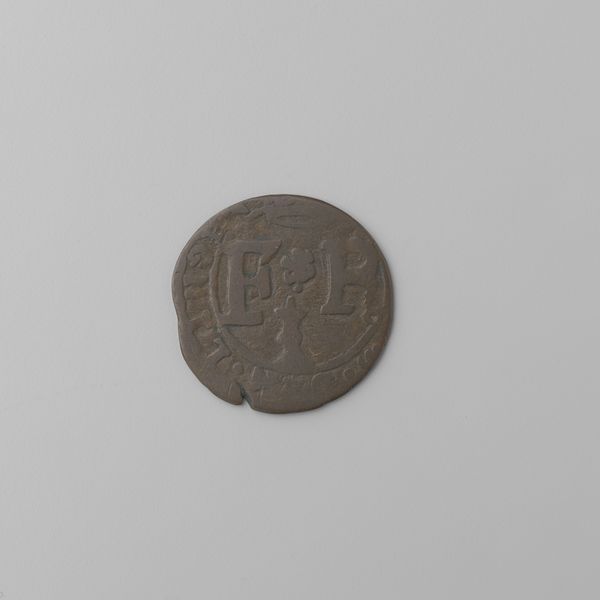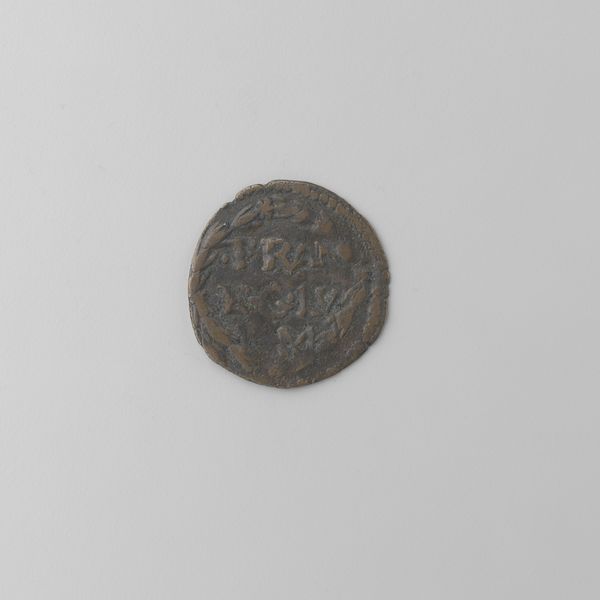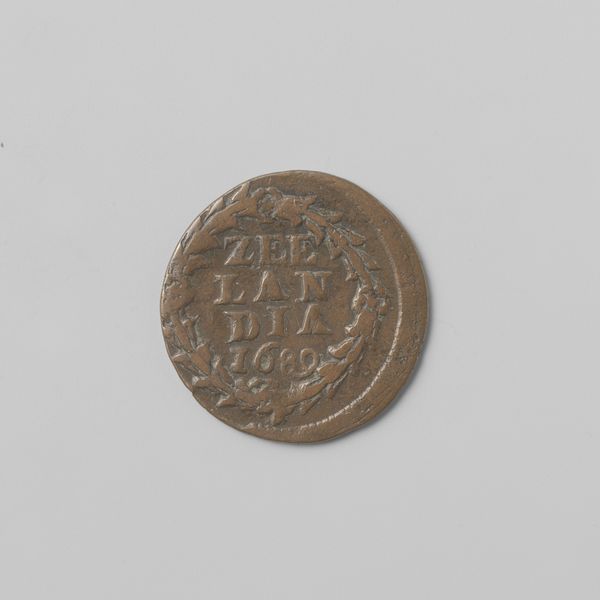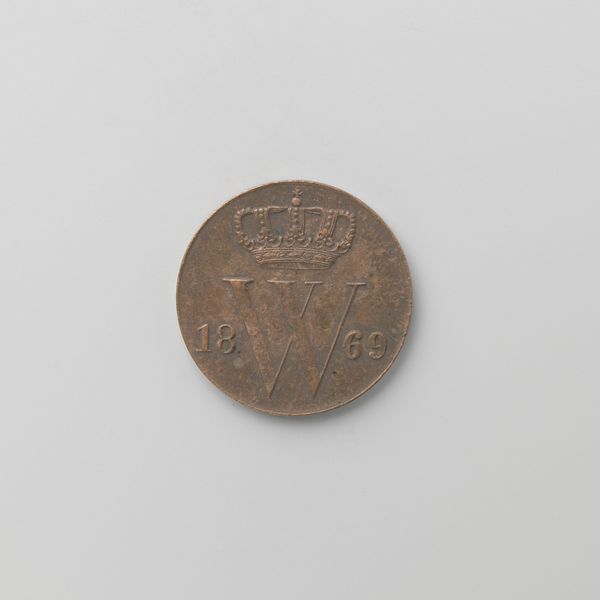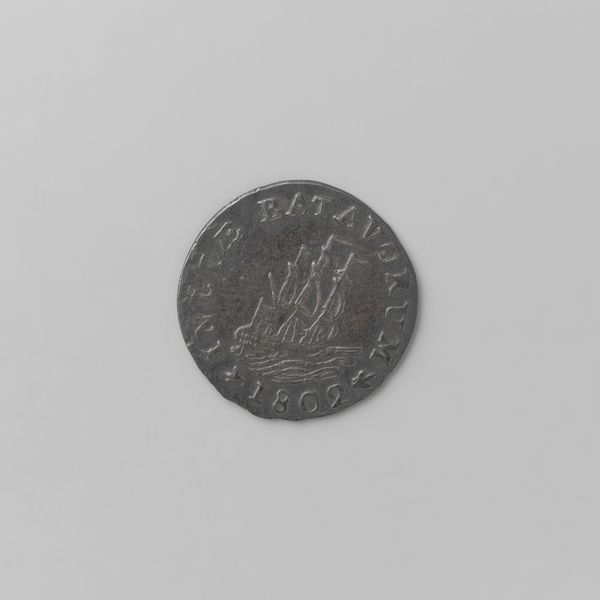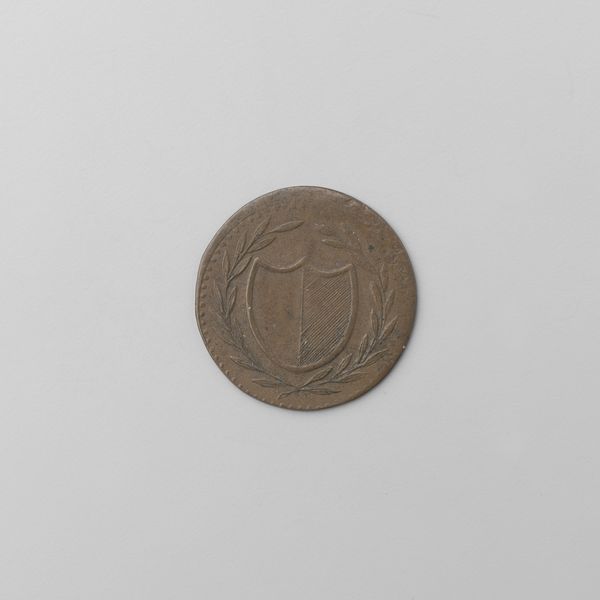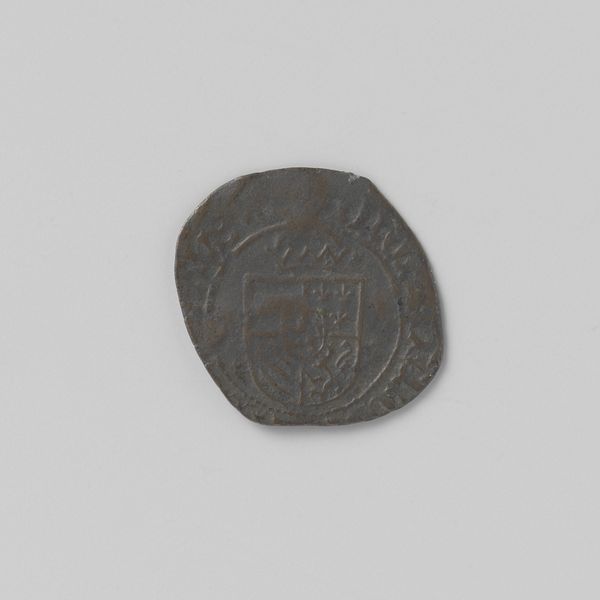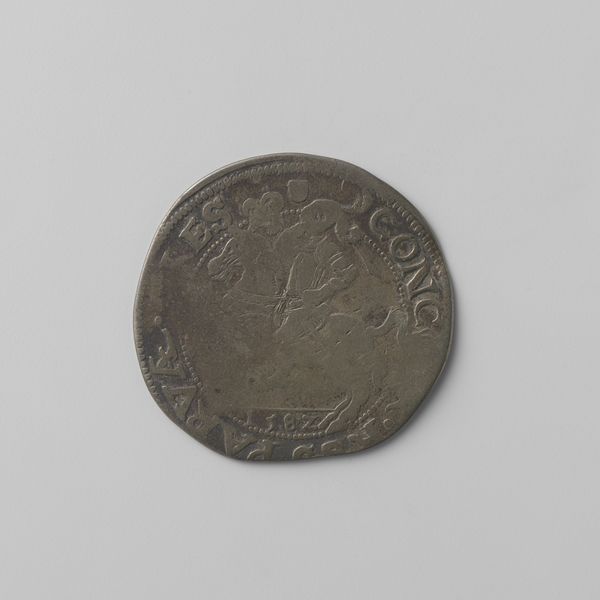
metal, photography
#
portrait
#
still-life-photography
#
metal
#
photography
#
geometric
#
ancient-mediterranean
#
islamic-art
#
miniature
Dimensions: diameter 2.0 cm, weight 1.62 gr
Copyright: Rijks Museum: Open Domain
Editor: So, here we have a photograph of a Reckheimse duit, dating from between 1636 and 1665, belonging to Ferdinand van Aspremont-Lynden. It’s struck in metal, and seeing it in photographic form like this, I am immediately struck by its small size. How would you interpret this work? Curator: It's compelling how the photograph abstracts this object, shifting our focus from simple currency to a potent symbol of power, trade, and social hierarchy in the 17th century. This coin, insignificant on its own, embodies Ferdinand van Aspremont-Lynden's position as heer van Reckheim. Consider the religious wars raging during this time. Coins were not merely economic tools but proclamations of sovereignty and religious allegiance. Editor: I hadn't thought of it that way. So, seeing this as more than just a coin, how does its existence challenge or reinforce ideas about identity and power during its time? Curator: Think about the local versus the imperial. Each coin was an assertion of local power against centralized authority. Further, understanding the social and economic conditions gives nuance to our view. It speaks volumes about how local rulers leveraged symbolic capital, like unique coinage, to assert authority and craft distinct regional identities. Who had access to these coins, and what did that signify? Editor: That's a really interesting perspective! I see now that studying seemingly minor artifacts like this can open up bigger dialogues about society and the structures that uphold it. Thank you. Curator: Absolutely. Analyzing coinage, when understood within historical context, gives rise to essential perspectives about how societal structures took shape. It helps deconstruct assumptions concerning economic activity.
Comments
No comments
Be the first to comment and join the conversation on the ultimate creative platform.

